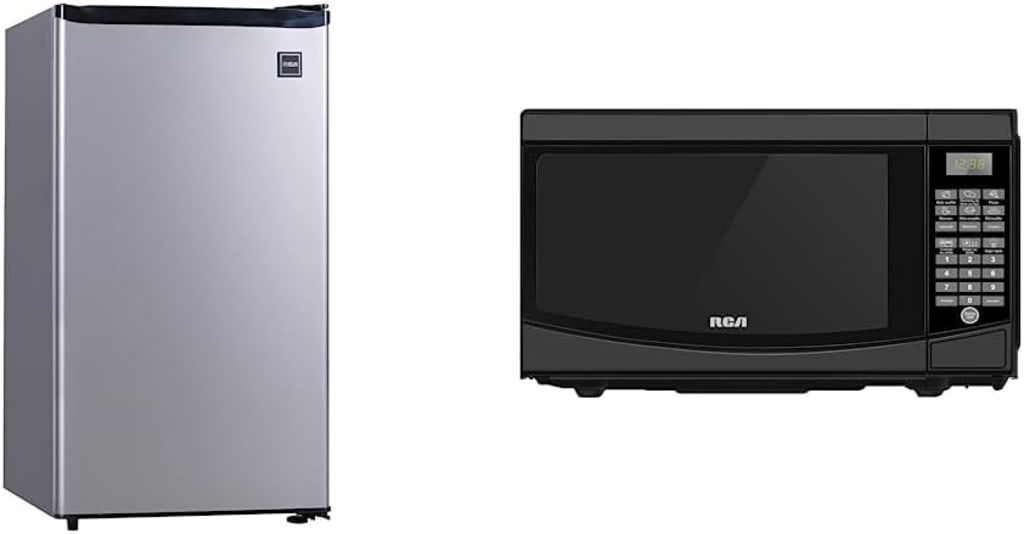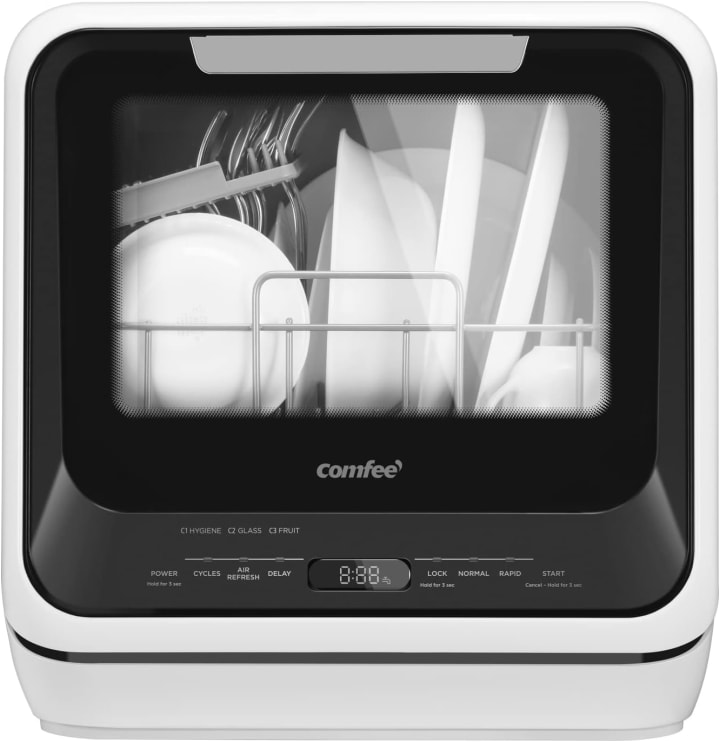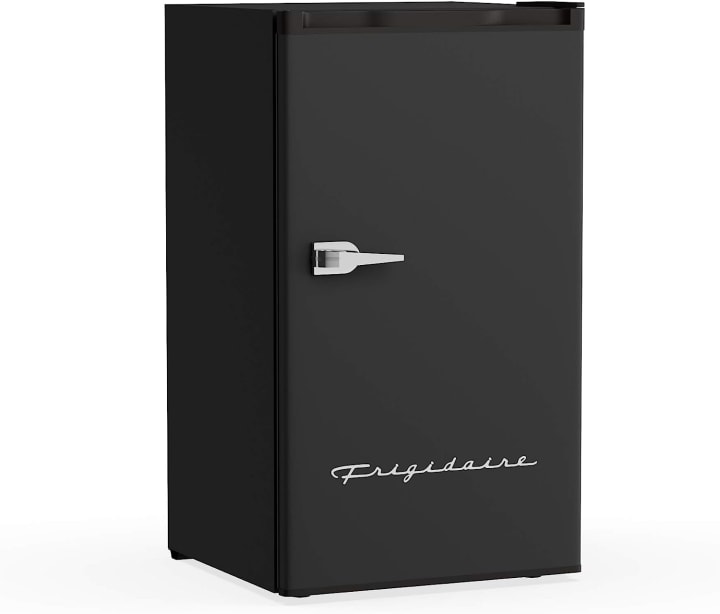Ditch the Cafeteria: How Cooking in Your Dorm Saves Hundreds Each Semester
College dorm life comes with many new experiences - late nights studying, befriending classmates from around the world, trying to sneak a party past the RA. But one aspect of university living often proves universal: overpriced cafeteria food.

Between mandatory freshman meal plans and over-the-top premium dining halls, feeding yourself on campus can burn through cash faster than a semester of overdue library books. Yet most students resign themselves to forking over hundreds per term for lackluster dining hall meals.
What if there was a simple way to slash your food costs while still enjoying delicious grub any time you crave it? Equipping your dorm with a compact fridge and microwave empowers you to prep meals on a budget - saving serious cash versus an expensive campus meal plan.
We crunched the numbers on typical university dining costs versus stocking up your own dorm kitchenette. Keep reading to discover how cooking for yourself can help you bank hundreds a semester over the cafeteria. Soon you’ll be whipping up ramen like a scrumptious savvy saver.
Cafeteria Meal Plans: An Expensive Way to Feed Yourself
Many colleges require freshman students to purchase a meal plan granting access to campus cafeterias and dining halls. While promoted as a convenient way to grab grub between classes, these plans lock students into inflated pricing.
A standard cafeteria plan at a public university costs between $300 to $500 per semester. Plans at private colleges soar even higher. With most plans, you’re allotted a set number of weekly meals. For example:
- 10 meals per week: $360 per semester
- 14 meals per week: $490 per semester
- Unlimited meals: $550 per semester
At an average of $10 per meal, just two daily meals under a 14-meal weekly plan shakes out to $1,400 for food over an entire academic year. And that doesn’t account for weekend late night pizza runs when the dining hall is closed, or Starbucks fixes between classes.
Once you factor in snacks, drinks, and meals outside the prescribed weekly allotment, you can expect to shell out $2,000 or more annually. That’s enough cash to fund a dream spring break trip with flights included!
And if you’re stuck with extra meals each week? Too bad - that money doesn’t roll over to the following semester. The rigid structure of these plans means you end up overpaying for unused meals.
Clearly, outsourcing your dining to the cafeteria comes at quite the financial cost. But what if you ditched the meal plan in favor of stocking up your own dorm room kitchen?
Affordable Dorm Room Cooking: The Budget-Friendly Alternative
Equipping your dorm with a few key appliances lets you prep simple meals at a fraction of cafeteria prices. Outfitting a basic dorm kitchenette with these essentials costs less than $300:
- Mini fridge: $120 to $200 for a quality 3.1+ cubic ft model
- Compact microwave: $50 to $80 range for 0.7+ cubic ft

- Plate and cutlery set: $15 for basic dining bundle
- Kitchen knife, cutting board, utensils: $20 for simple starter set
- Reusable water bottle and coffee thermos: $15 to $30 range

With these core items, you’ll be ready to cook up dorm room feasts in no time. So what can you whip up using just a mini fridge and microwave? More than you might think!
Crowd-pleasing dorm recipes include:
- Instant ramen + frozen veggies
- Refrigerated protein bowls
- Yogurt parfaits
- Bean and cheese burritos
- Microwavable mac and cheese
- Scrambled eggs
- Overnight oats
- Microwave mug cakes
When it comes to meal cost comparison, dorm room cooking wins by a landslide. Let’s break down a typical weekly grocery haul for whipping up your own dishes:
- 1 dozen eggs - $2.50
- Yogurt cups - $6
- Fruit - $7
- Vegetables - $5
- Bread - $3
- Cheese - $4
- Chicken breast - $8
- Ramen/pasta - $6
- Oatmeal - $4
- Burritos - $15
- Snacks - $10
Total weekly cost: $70
Over a 15 week semester, your total dorm food costs shake out to $1,050 - saving you $400 to $800 over a mandatory cafeteria meal plan at $300 to $500 per semester.
And unlike the rigid structure of a meal plan, you can customize what you eat each week. Cook more or less depending on upcoming exams and events. Meal prep on Sundays to stock up for busy weeks. Hit the dining hall just when craving their Friday pizza buffet.
The flexibility of prepping your own meals alongside campus dining provides the best of both worlds. You enjoy delicious food on your own schedule, while banking serious cash from bypassing the meal plan.
For many students, the difference of $400 to $800 saved each semester from opting out of the meal plan makes a game-changing impact. That’s money that can pay for textbooks, travel home, or exploring your college town.

The financial benefits extend well beyond saving money on food. Meal prepping also deters impulse purchases of takeout, delivery, and cafeteria snacks.
Let’s say you order takeout just twice a week rather than meal prepping. At $10 per meal, over 30 weeks that tallies up to $600 extra spent. Meal prepping saves you cash on food costs directly, plus deters convenience spending's.
Cooking your own dorm dishes isn’t just cheaper - it also comes with health perks. You control exactly what goes into your food, avoiding the hidden calories and sodium from dining hall dishes. Portioning your own meals helps keep late night snacking under control.
As one student who opts for dorm cooking explains: “When I meal prep for the week, I eat healthier because I curb impulse buys and junk food. I have more energy since I'm eating balanced meals.”
Dorm room cooking equips students with useful culinary skills for life after college, when sink-or-swim meal prep becomes essential. After just one semester of whipping up your own dishes, you’ll become a money-saving meal prep pro.

The Takeaway: Save Hundreds and Eat Better with Dorm Cooking
From ramen to DIY pizza bagels, a simple dorm kitchen allows students to take mealtime into their own hands - and budgets. Outfitting your space with a quality mini fridge and microwave comes at a fraction of a pricey mandatory meal plan.
Meal prepping just two dishes per day can save the average student around $600 per semester and over $1,000 yearly compared to a cafeteria plan. That’s extra cash that can fund once-in-a-lifetime experiences outside lecture halls.
Beyond massive cost savings, cooking your own dorm dishes comes with other benefits:
- The ability to customize inexpensive and healthy meals
- Developing useful cooking skills for post-grad life
- Less temptation for takeout and junk food purchases
- Fridge snacks whenever hunger strikes
Any student can transform their dorm into a cozy kitchenette. Assemble the appliances and essentials you need at the start of each term to set yourself up for savings.
Come Thanksgiving, you’ll be extra grateful you ditched the overpriced cafeteria in favor of building your own dorm kitchen. Get ready to feast both smartly and deliciously!

Affiliate Link Disclaimer:
Disclosure: This post/channel may contains affiliate i.e. ( Affiliate and/or Amazon Associate) links, which means we may receive a commission. The compensation may come in the form of money or free use of the services provided, if applicable, but legal. All transactions through our affiliate links are secure. We present this information to you to disclose our position and to inform you as you click a link and make a purchase or participate in something that we have recommended. While clicking these links won't cost you any extra money, you are not required to purchase or participate.
About the Creator
LynP
I'm well-versed in many areas, I enjoy sharing any kind of information to help anybody achieve a measure of success. Human Betterment is my thing.






Comments
There are no comments for this story
Be the first to respond and start the conversation.